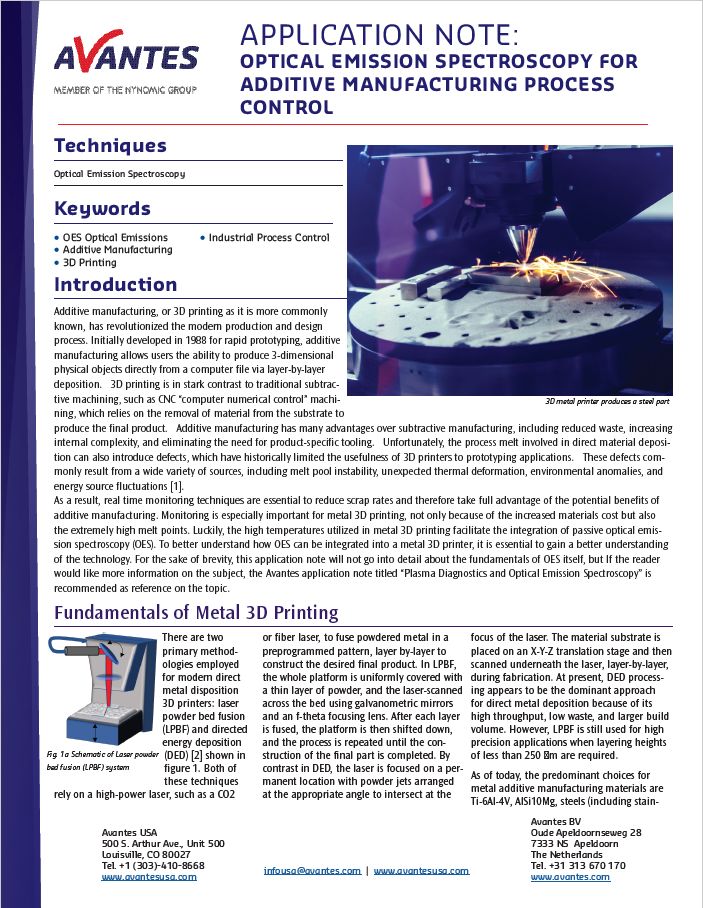Additive Manufacturing Applications for OES
Additive Manufacturing, in layman’s terms, is the process of manufacturing an item by adding material, like 3D printing, rather than a subtractive method where material is removed from a larger whole, as with carving an item from a block. The obvious benefits of using an additive process are less waste, better cost ratio for one-off or small-batch production, and the potential for added complexity and/ or reduced size of components. As technology in the field has advanced and cost of entry has fallen, 3D printing suites are now commonly found in R&D departments around the world, offering faster, more affordable prototyping
Additive Manufacturing Application Paper
Additive manufacturing, or 3D printing as it is more commonly known, has revolutionized the modern production and design process. Initially developed in 1988 for rapid prototyping, additive processes allow users the ability to produce 3-dimensional physical objects directly from a computer file via layer-by-layer deposition. 3D printing is in stark contrast to traditional subtractive machining, such as CNC “computer numerical control” machining, which relies on the removal of material from the substrate to produce the final product. Additive manufacturing has many advantages over subtractive manufacturing, including reduced waste, increasing internal complexity, and eliminating the need for product-specific tooling. Unfortunately, the process melt involved in direct material deposition can also introduce defects, which have historically limited the usefulness of 3D printers to prototyping applications. These defects commonly result from a wide variety of sources, including melt pool instability, unexpected thermal deformation, environmental anomalies, and energy source fluctuations.
Start Integrating with Avantes today
Learn more about the benefits of integrating Avantes cutting-edge spectrometers in your additive manufacturing process.
 My Cart
My Cart 
